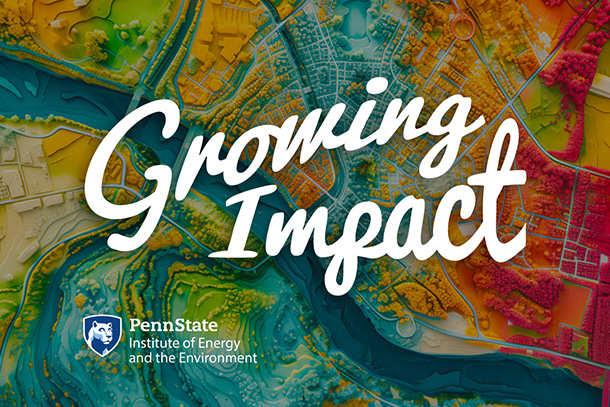
The latest episode of Growing Impact explores how a research team is using computer modeling and animations to visualize future flood and levee failure scenarios. Credit: Brenna Buck.
'Growing Impact' discusses communicating inland flooding through visualizations
Nov 1, 2024
Editor's note: This article originally appeared on Penn State News.
UNIVERSITY PARK, Pa. — The latest episode of "Growing Impact" explores how a research team is using computer modeling and animations to visualize future flood and levee failure scenarios. With flooding as the most common natural disaster on Earth, it claims thousands of lives and inflicts billions of dollars in damages annually. In the U.S., an estimated 41 million people live in designated flood zones, a number that is steadily growing. Kaleigh Yost, the Kimball Early Career Assistant Professor in the Department of Civil and Environmental Engineering at Penn State, is leading the project that aims to help communities better plan, prepare and respond to flooding threats.
“As a society, we continue to build infrastructure in and move to floodplains,” Yost said. “It's really important that we can communicate that risk to the people that are living and building in these areas.”
Additionally, many buildings in America are not included in mapped flood zones. However, this doesn’t mean that those communities are safe from flooding. In fact, nearly half of flood insurance claims occur outside of designated flood zones.
Yost stressed the need for an effective communication system. This would help both the public and decision-makers make informed choices about when to evacuate, how to prepare and how to respond. With climate change causing more frequent and severe floods, having clear information is more important than ever.
Yost and her team are working near two towns in northeastern Pennsylvania, Forty Fort and Kingston, that is protected by a large levee system. These levees are made of soil and other materials, and they help to keep the nearby river within its banks even if the waters rise.
However, levees can fail. Yost’s team is working on computer models and animations that would clearly show how a levee failure would impact a local community. Failures could include water overtopping the levee or seepage through a levee.
“My model will illustrate various levee failure scenarios, giving communities a clear view of potential risks,” Yost said. “Visualizations created by Peter Stempel would show how that levee failure could impact the properties immediately adjacent to the levee.” Stempel is an associate professor of landscape architecture and a member of the research team.
The team can then compare how well one type of visualization communicates the risk compared to another. For example, they could see how showing just the depth of flooding at a specific location works versus using a different kind of visualization.
“Preparation and mitigation are key,” Yost said. “It's going to be important especially as we start to see more intense, severe rainfall events that cause worse floods than we've seen in the past. It’s crucial that we get the message to these communities that this is something that they can prepare for.”
“Growing Impact” is a podcast by the Institute of Energy and the Environment. It features Penn State researchers who have been awarded IEE seed grants and discusses their foundational work as they further their projects. The podcast is available on multiple platforms, including YouTube, Apple, Amazon and Spotify.

